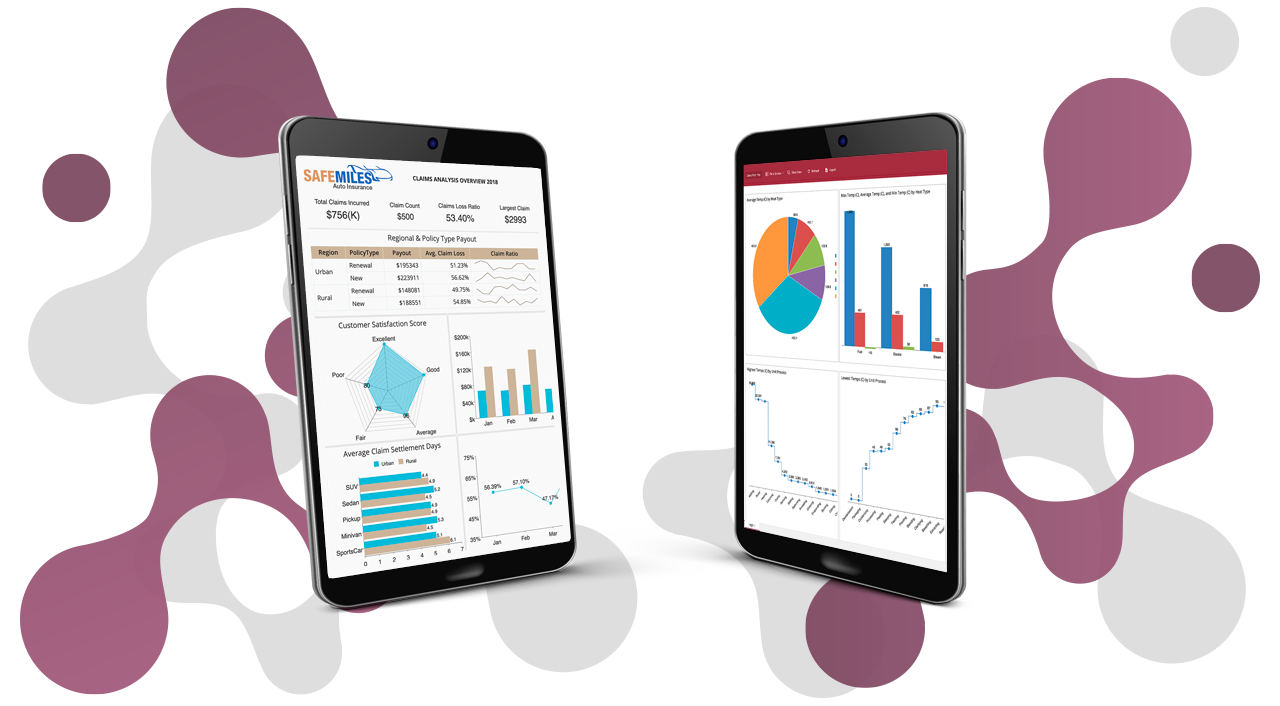-
Interactive DashboardsCreate interactive BI dashboards with dynamic visuals.
-
End-User BI ReportsCreate and deploy enterprise BI reports for use in any vertical.
-
Wyn AlertsSet up always-on threshold notifications and alerts.
-
Localization SupportChange titles, labels, text explanations, and more.
-
Wyn ArchitectureA lightweight server offers flexible deployment.
-
 Wyn Enterprise 7.1 is ReleasedThis release emphasizes Wyn document embedding and enhanced analytical express...
Wyn Enterprise 7.1 is ReleasedThis release emphasizes Wyn document embedding and enhanced analytical express... -
 Choosing an Embedded BI Solution for SaaS ProvidersAdding BI features to your applications will improve your products, better serve your customers, and more. But where to start? In this guide, we discuss the many options.
Choosing an Embedded BI Solution for SaaS ProvidersAdding BI features to your applications will improve your products, better serve your customers, and more. But where to start? In this guide, we discuss the many options.
-
Embedded BIEmbed reporting & analytics within your own custom apps.
-
Self-ServiceEnable users to create custom ad hoc reports and dashboards.
-
MultitenancyEnhance your SaaS apps with a multitenant BI platform.
-
Data Governance and ModelingTransform raw data into insights quickly to reveal trends.
-
Scheduled DistributionSend data insights via scheduled email and chat notifications.
-
Extensible SecurityWyn delivers extensible security for your access control needs.
-
Visual GalleryInteractive sample dashboards and reports.
-
BlogExplore Wyn, BI trends, and more.
-
WebinarsDiscover live and on-demand webinars.
-
Customer SuccessVisualize operational efficiency and streamline manufacturing processes.
-
Knowledge BaseGet quick answers with articles and guides.
-
VideosVideo tutorials, trends and best practices.
-
WhitepapersDetailed reports on the latest trends in BI.
-
 Choosing an Embedded BI Solution for SaaS ProvidersAdding BI features to your applications will impr...
Choosing an Embedded BI Solution for SaaS ProvidersAdding BI features to your applications will impr... -

The Top Features of a Healthcare Business Intelligence (BI) Solution
The United States has the highest overall and per-capital healthcare spending of any developed country, overspending by approximately $600 billion. Big data and the use of business intelligence in healthcare have the potential to change this outcome. It is estimated that healthcare business intelligence could reduce annual healthcare costs by $300 to $450 billion—effectively halving the overspend.
Healthcare BI won’t address every excess expenditure in the system, but it can significantly reduce costs while simultaneously improving patient care.
There are many benefits of utilizing embedded business intelligence tools in clinical healthcare, ranging from solo practices to hospital networks.
Here, we’ll discuss features to look for in a healthcare BI tool. We’ll also address the questions a healthcare BI tool can answer.
What to Look For in a Healthcare BI Tool
When selecting a business intelligence solution for healthcare, organizations must consider all users and other factors.
- Integration: Setup costs are a concern anytime a major software solution is first implemented. A healthcare BI tool should be easily embedded into existing operations so that these costs remain reasonable.
- Self-service BI: Look for a BI platform that offers a simple user interface (UI) and user experience (UX), so it’s not intimidating to employees who aren’t tech-savvy. Self-service BI allows users to run their own queries and create their own dashboards and reports, even if they don’t have a background in statistical analysis. Additionally, self-service BI allows saves time and cost by reducing the necessary adoption training.
- Embedded: An embedded business intelligence solution will integrate across an organization’s different departments. This facilitates the sharing of data, which is necessary for the identification of high-value treatments for example. It also ensures that providers and staff can use the solution within their normal routines. By embedding BI into applications that employees are already using, it cuts down on the cost of onboarding, training, and development.
- Visualizations: The primary purpose of BI is to make big data more easily digestible, and data visualization in healthcare is essential to this effort. A BI solution with real-time data visualization and ad hoc reporting features will help providers and staff quickly assess complex data.
- Codeless/Low Code: Small healthcare organizations don’t have extensive IT departments, and maintaining software becomes a major expanse for larger organizations that do have in-house IT. Choosing a low code BI tool that has self-service features will lower ongoing IT costs.
- Security: Of course, security is a major consideration due to both HIPAA regulations and general liability concerns. The healthcare industry has been slower to adopt business intelligence than other sectors (e.g., retail and financial). The delay is largely due to concerns over patient privacy. Any chosen solution should have data governance protocols, a centralized data repository, a secured environment with role-based access, and modeled and structured data availability.
- Permissions: The permissions integrated into a solution should be both secure and accessible. Providers will need to log in regularly, and doing so shouldn’t be cumbersome. At the same time, non-authorized persons shouldn’t gain access.
BI Reporting Tools Address These Questions:
Is This Specific High-Cost/High-Risk Treatment Worth Pursuing?
The ability to assess the likely effectiveness of different treatments is critical when considering high-cost or high-risk treatments. Recommending specific high-cost/high-risk treatments shouldn’t be left to personal medical provider judgment.
Healthcare business intelligence ensures that the decision isn’t based solely on subjective judgment by providing evidence on the effectiveness and risks of specific treatments in specific situations.
Should Providers Recommend New Treatments to Patients?
One of the most challenging treatment decisions that providers make is whether to recommend newer treatments. Of course, the decision will always be situationally specific to both the treatment and patient. The aggregate data that business intelligence tools analyze can aid in two ways.
- First, the more comprehensive analysis that healthcare BI offers can give providers greater information about what newer treatments offer and when they’re effective. The data can help cautious providers be more confident in recommending promising new treatments, and it can help curb less-cautious recommendations for treatments in uncertain situations.
- Second, BI healthcare dashboards can provide real-time data in many situations. When a newer treatment first emerges, keeping current with data (as the treatment is used clinically) makes it possible for providers to base their recommendations on the latest information
Where Can the Organization Improve Revenues Without Sacrificing Patient Care?
Identifying high-value treatments and overlooked treatments show where an organization can maintain or increase revenues. Pairing that financial data with treatment outcomes ensures that revenues are never pursued at the expense of patient care, but are improved in concert with maintaining and improving patient care.
Where Are Labor Inefficiencies Among Medical Providers?
Accurately determining what cases each level of medical provider can treat makes better use of all providers’ time, including doctors, physician assistants, and nurses. This reduces labor inefficiencies and costs.
Reducing labor costs in this way may simultaneously improve patient care, as appointments are scheduled with the appropriate level provider. The savings that an organization sees is often substantial considering how high labor costs are in the field.
The Future of Healthcare and Data
The role of big data in healthcare will only increase, and all organizations should be adopting solutions.
To learn more about how healthcare business intelligence can help your organization both now and in the future, contact us. ↓


Kelley DeSantis
Kelley DeSantis is Technical Engagement Engineer with Wyn Enterprise. She studied Information Systems and minored in Business Administration at Clarion University of Pennsylvania. In her spare time, she enjoys spending time with her family, hiking, and listening to music. Connect with Kelley on LinkedIn.
Don’t take our word for it.
See what our customers have to say.




Loved by industry
experts and real users
Whether it’s your business or your commercial SaaS app, embed Wyn and empower users to design, share, and distribute interactive dashboards and reports.












